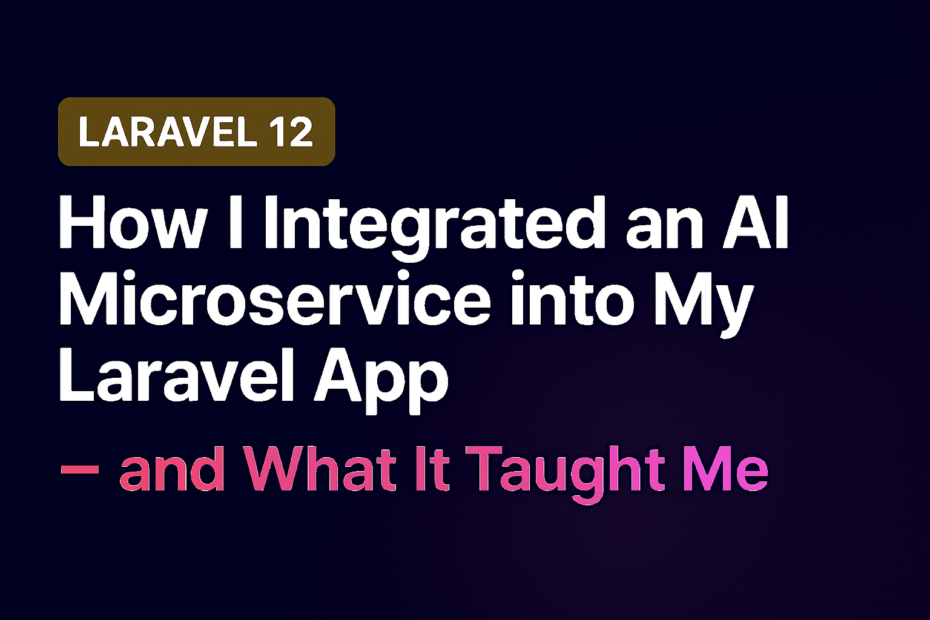AI isn’t just hype anymore — it’s backend infrastructure. Whether it’s chat summarization, smart recommendations, or image generation, developers are weaving AI into their stacks to unlock new capabilities.
Last month, I decided to integrate an AI microservice into my Laravel app. It wasn’t just a technical experiment — it was a crash course in architecture, performance, and the real-world tradeoffs of building smarter software.
Here’s what I built, how I built it, and what I’d do differently next time.
🔍 Motivation: Why Add AI to the Backend?
I wanted to solve a real pain point for users:
Automated image captioning for uploaded photos.
Use cases:
- Creators uploading thumbnails
- Bloggers needing alt text
- E-commerce sellers wanting SEO-friendly descriptions
Manual captioning was slow and inconsistent. AI could do it in seconds — and often better.
Other backend AI use cases I considered:
- Chat summarization for support threads
- Predictive tagging for blog posts
- Video scene detection for content creators
Laravel gave me the speed to build fast. AI gave me the power to build smart.
🧱 Architecture: Laravel + External AI Microservice
Instead of building a separate service in Python or Node, I used Laravel to directly consume external AI APIs (like Replicate, OpenAI, or Stability AI) via REST.
Integration Options I Explored:
| Method | Pros | Cons |
|---|---|---|
| REST API | Simple, Laravel-native | Slower for large payloads |
| Queue-based (Redis + Horizon) | Async, scalable | Harder to debug in real time |
I went with REST + queued jobs for simplicity and scalability. Laravel handled everything — from request orchestration to error handling.
🧩 Code & Integration Details
1. Auth
- Used Laravel’s
Http::withToken()to securely call the AI API - Stored API keys in
.envand rotated them monthly
2. Error Handling
- Wrapped API calls in try/catch blocks
- Used Laravel’s
report()andretry()logic for failed jobs - Logged structured errors to Sentry
3. Rate Limiting
- Laravel throttled requests per user using
RateLimiter::for() - Added global usage tracking via Redis to avoid hitting API quotas
4. Fallbacks
- If the AI API failed, Laravel generated a basic caption using image metadata
- Users saw a “fallback used” badge for transparency
⚖️ Performance & Cost Tradeoffs
| Factor | Impact |
|---|---|
| Latency | ~2.5s per image (acceptable for async UX) |
| Cost | $0.002/image using hosted model on Replicate |
| Server Load | Offloaded to external API |
| Cold Starts | Avoided by pre-warming queues and caching prompts |
Lessons:
- Async queues are your friend
- Don’t expose AI latency to the frontend
- Monitor usage to avoid surprise bills
🔄 What I’d Do Differently Next Time
- Add caching for repeated prompts
- Build a local fallback model using PHP-based ML libraries (like Rubix ML)
- Containerize the app for better deployment flexibility
- Add user feedback loop to improve AI outputs
- Explore gRPC or WebSockets for real-time AI interactions
📣 Your Turn: Share Your AI Integrations
Have you added AI to your Laravel app?
Whether it’s chat, prediction, or image magic — I’d love to hear how you approached it.
Drop a comment, DM me, or tag me in your post. Let’s build smarter, together.
